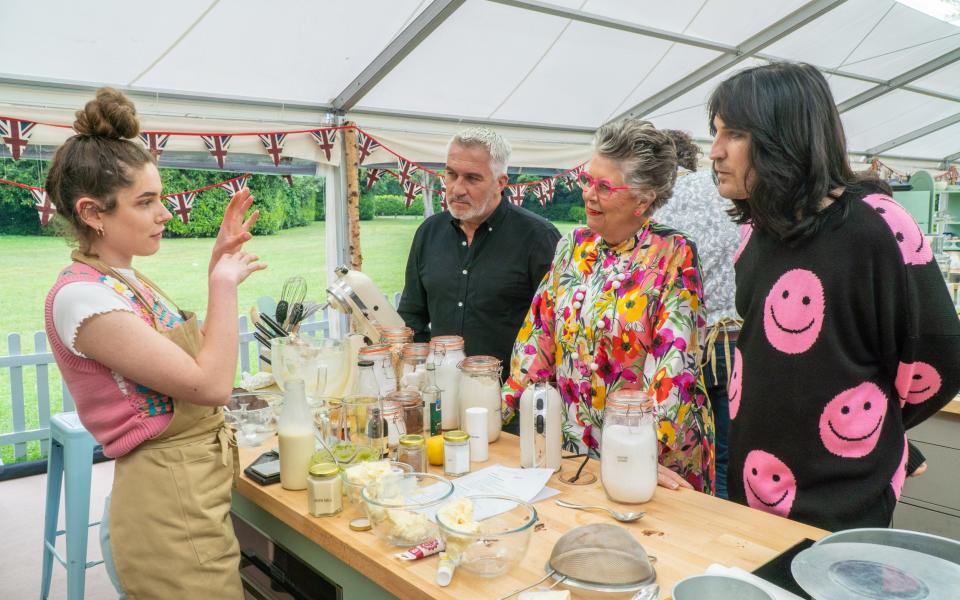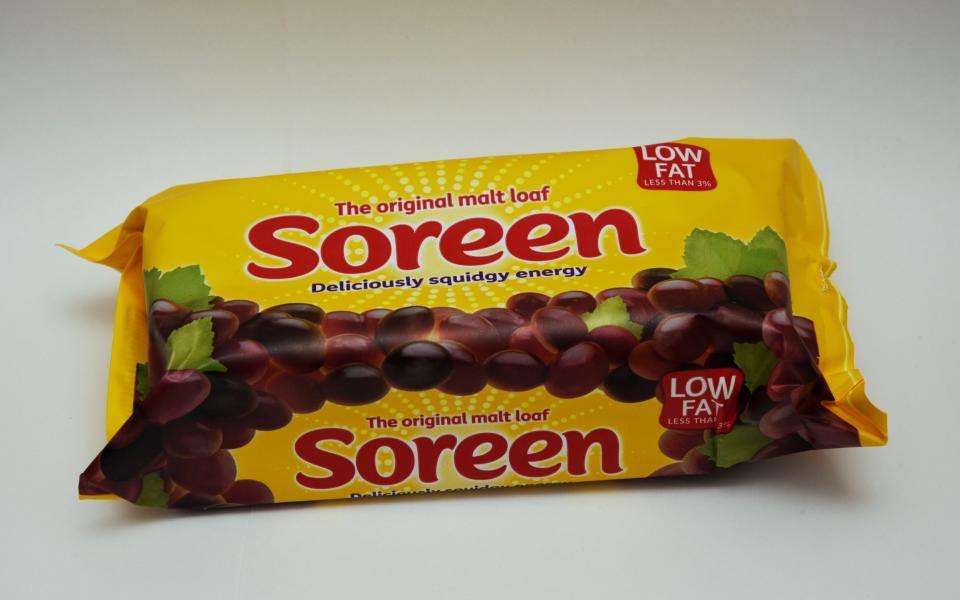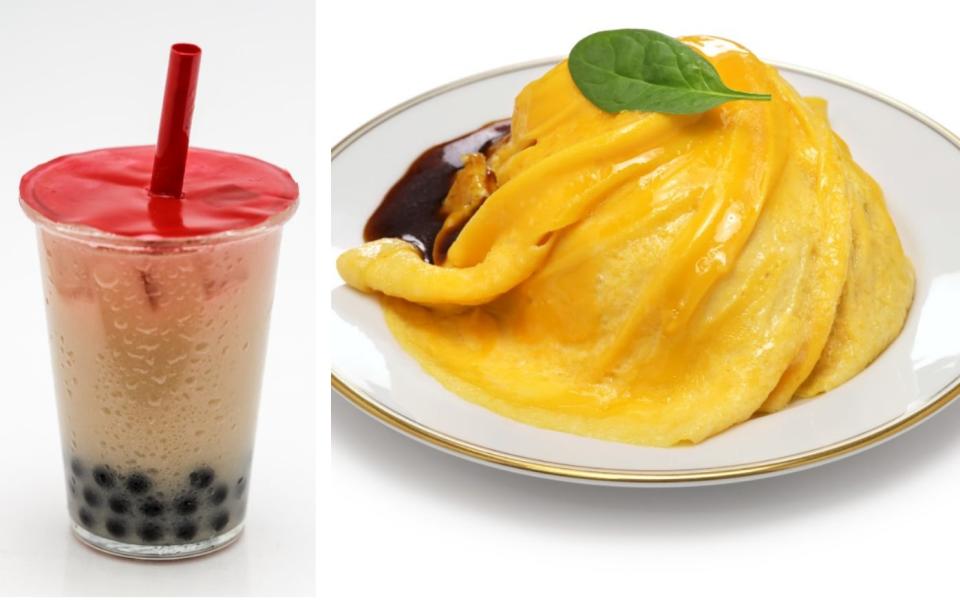‘What is malt loaf?’ Millennials don't know what they've been missing

The Great British Bake Off is back and with it cake-based controversy. As Prue Leith announced that the technical challenge was going to be making malt loaf, that treacly, squidgy tea-time staple, she added, “Those of you who are under 35 may never have heard of it.” What? Not heard of malt loaf? Slices of damp, sticky Soreen were a staple of my childhood. My children – now students – had slices in their lunch boxes, or for tea, warmed to accentuate that fudgy chewiness and dripping with butter.
Maybe that was just us. An unscientific straw poll of the kids’ friends revealed plenty who didn’t know about it. “Is it that thing in a yellow wrapper?” asked one. “Sounds dense and from the Seventies,” said another.
When I spoke to Soreen’s managing director Mark Simester, he was dealing with the Twitter frenzy as malt loaf and Soreen both trended while checking the retailers had sufficient stock – don’t panic, he says, there’s plenty in the warehouses. But while we may have a spurt of Malt Loaf Mania on our hands, he admits that recognition was a problem 10 years ago. Then, in 2012, they invented lunchbox loaves – a mini, individually wrapped malt loaf, which now makes up 50 per cent of their business. “There’s millions of schools taking it every day in their lunch boxes… So there's lots of young families in the UK that are under 35 who know exactly what [it] is.”
They’ve added an adult size loaf bar to the range too, no doubt welcomed by their other fanbase: fitness enthusiasts. Leeds Rhinos, Salford City Reds and Liverpool Football Club are apparently all among them. Cyclists love malt loaf for its slow release carbohydrates– according to Cycling Weekly, “compared with most energy bars, far less of that carb content comes from sugars,” which means it is “better for the long slow release of energy you need for endurance events”. Granted, for most of us an endurance event is getting through a box set of The Wire without using subtitles, but it’s worth bearing in mind for your next half marathon.
It’s far from a perfect food – with a whack of partially inverted sugar syrup, the NOVA classification of foods puts it into the bracket of Ultra Processed Food: the new antichrist of the healthy eating world. And environmentalists might wish that they dropped the palm oil from the ingredients, although Simester tells me they follow World Wildlife Fund advice and use only certified sustainable palm oil.
But compared with other sweet or savoury packaged snacks, it scores well and is even recognised as a healthy snack by the Government’s Change4Life campaign. It is low in fat and has 63 per cent less sugar than the average cake bar. Plus it has iron, vitamin B6, fibre and potassium, thanks to the malt and treacle content.
Soreen is also vegan – which ought to make it manna to millennials. I blame TikTok and Instagram for the generational “recognition gap”: malt loaf is dark brown with a few darker brown splodges (the raisins) so it’s got low photographic appeal. Twentysomethings these days are happier whisking up rainbow-coloured confection like cloud bread because who cares how things taste as long as it garners “likes”?

The colour, and the delectable smokey, almost licorice-y flavour is down to the combination of malt flour, malt syrup and black treacle. Malted barley is made by soaking barley grain in water and allowing it to germinate, a process that converts some of its carbohydrate to sweet, malty maltose. The malted barley can then be dried and ground for flour, and the liquid, called wort, drained off. Wort can be fermented to make beer or it can be boiled down to make malt syrup.
But while malt has been around for millenia, Soreen malt loaf was a creation of John Rahbek Sorenson, a Dane who settled in Manchester in 1932. Initially he sold equipment to bakeries, but soon diversified into baking himself. The city’s industrial workers were keen for affordable sweet treats and his malt loaf caught on.
When Sorenson sold the baking business in 1938, William and Peggy Mason, owners of the newly formed Imperial Bakeries, kept the name Soreen. In 2014, Soreen was sold to Samworth Brothers, a British company also responsible for other national food treasures, Ginsters Cornish pasties, and the largest producer of genuine Melton Mowbray pork pies. All the Soreen malt loaf sold worldwide is still produced in the factory.
Where the original malt loaf, with its distinctive dark colour and deep flavour, came from is not clear. Mrs Beeton doesn’t have a recipe, nor does Dorothy Hartley in her authoritative Food in England. According to historian Annie Gray, the Oxford English Dictionary refers to it in the 1890s “although I suspect it was rather less cake-like than Soreen then”. Perhaps more like a brown malted granary. She adds: “The references and my gut feeling suggest it was associated with the working class as white bread was still more prestigious at that stage, by far.”
It seems most likely that Sorenson used a recipe for the Swedish classic vörtbröd, a dark sticky raisin bread enriched with wort and adapted it for local tastes, already well used to dark malty ale and treacly gingerbread.
Gray is not (quite) a millennial, but she admits, “I’d never heard of malt loaf until I got to uni. I think it’s a class thing.” She might have something there: there’s a chunk of the middle classes who seem to have hung on to malt loaf more tightly, despite it being infuriatingly difficult to slice – the trick, according to Simester, is to turn it upside down. Sounds like a good hack for TikTok to me. Nothing controversial about that.
Five Gen Z favourites you probably haven’t heard of

Butter coffee: Aka bulletproof coffee, essentially black coffee with a tablespoonful of butter and another of coconut oil (or medium-chain triglyceride oil) stirred in. It’s claimed to slow down the caffeine “hit”, curb appetite and improve your brain function, but it tastes every bit as disgusting as it sounds.
Bubble tea: Tapioca might be the stuff of school dinner nightmares to the older generation, but millennials love this Taiwanese speciality, which finds the edible beads sitting at the bottom of a huge cup of sweet, cold tea, often with added fruit juice.
Feta pasta: A TikTok sensation that supposedly sparked a feta shortage in Finland, this is basically a slab of feta and some tomatoes baked with a slug of olive oil and then stirred into pasta to make a creamy sauce. See also: American food writer, Alison Roman’s caramelised shallot pasta.
Rainbow cloud bread: Egg whites beaten to a voluminous fluff with sugar, divided and coloured pink, blue, orange – all the unicorn hues. Shaped into balls and baked, they turn brown on the outside, but break them open and the rainbow is revealed. The flavour could be most politely called “mild”.
Tornado omelette: A Korean speciality. A half cooked omelette, twisted in the pan with chopsticks to form a whirlpool shape as it finishes cooking. Looks cute on Instagram, tastes like… omelette.

 Yahoo News
Yahoo News 